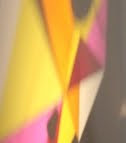when sounds become drawings...

50 sounds of the sea is the earliest work in my upcoming show. the piece consists 50 drawings in ink on index cards, housed in a hand made wooden box with a hand etched piece of tin on the lid. the drawings were made over the course of an hour on the evening of december 1st, 1990. my plan was to repeat the action every night for a year, but i ended up continuing it for only five consecutive evenings.
the drawings were made while standing on a ship at midnight looking at the sea in darkness as one day turned into the next. the piece was an early attempt to allow sound - in this case the ocean - to determine the movements of my hand. it is probably the earliest piece i made attempting to reconcile my interests in both sound and visual activities, as well as the beginning of an exploration of ideas related to recording and translation.
certainly i was thinking about the drum brush drawings of tom marioni, william anastasi's subway drawings, robert morris's blind drawings, and the work of terry fox - all of which i was just beginning to discover. in 1988 while still in grad school, i had been exploring conceptual strategies towards drawing and painting, but it was tentative, and mostly related to richard long and using walks to conceive of objects that would then be made in my studio.
at that time i was struggling with two things. one was to find a way to exploit process towards a different kind of making activity, and the other was to find a way to bring my interest in sound into my visual work - things i'm still exploring and still struggling with 20 years later. these drawings in a box were an important first step towards the exploration of both of these issues, as it suggested a path of making that involved a kind of performative limitation - drawing with my eyes "closed" - and they attempted to use sound to generate images.
also, at its most basic, 50 sounds of the sea was the first work that i made from a score:
"look at the sea in the dark, allow the sound to suggest drawing actions, and don't look at the paper."
i remember in undergraduate school, a life drawing teacher continually yelling "draw what you see, not what you know," and i think the idea of drawing outside at night was a way of messing with that idea, because i couldn't "see" anything but darkness.
certainly, the score for this work was simple, but i had never before attempted to impose a physical or conceptual limitation upon my natural tendency to draw in any way. the action shifted the focus from my eyes to my ears and hands, and it held the potential to generate something i might not expect to make. it also allowed the work to have some level of vulnerability, and accepted failure as a possible outcome (what if the drawings were absolutely uninteresting?). it approached the activity of drawing as an experimental activity, as opposed to a resolved activity.
one other thing that was so interesting is that i found myself incredibly focused on what i was listening to, and realized that one sense could fuel another - in this case sound and touch toward the creation of the visual without the use of sight. listening changed the way i made drawings.
eighteen years after making 50 sounds of the sea, i was working with allan kaprow's scores towards a performance of 18 happenings in 6 parts. while researching his work for a few months at the getty, i realized that the thing i responded to so deeply within his work was how his approach to conceptual process has always been human scaled (as opposed to academically scaled) and how it allows a great deal of room for the intuitive process. kaprow's work always seems to fall on the side of the conversation, rather than the resolved.
my own attempts towards expanding the ways i can mine a conceptual process towards generating intuitive moves, and somewhat traditional objects still feels like an experiment, and much of my work is still, on many levels, an artifact of a score and a performative process.












